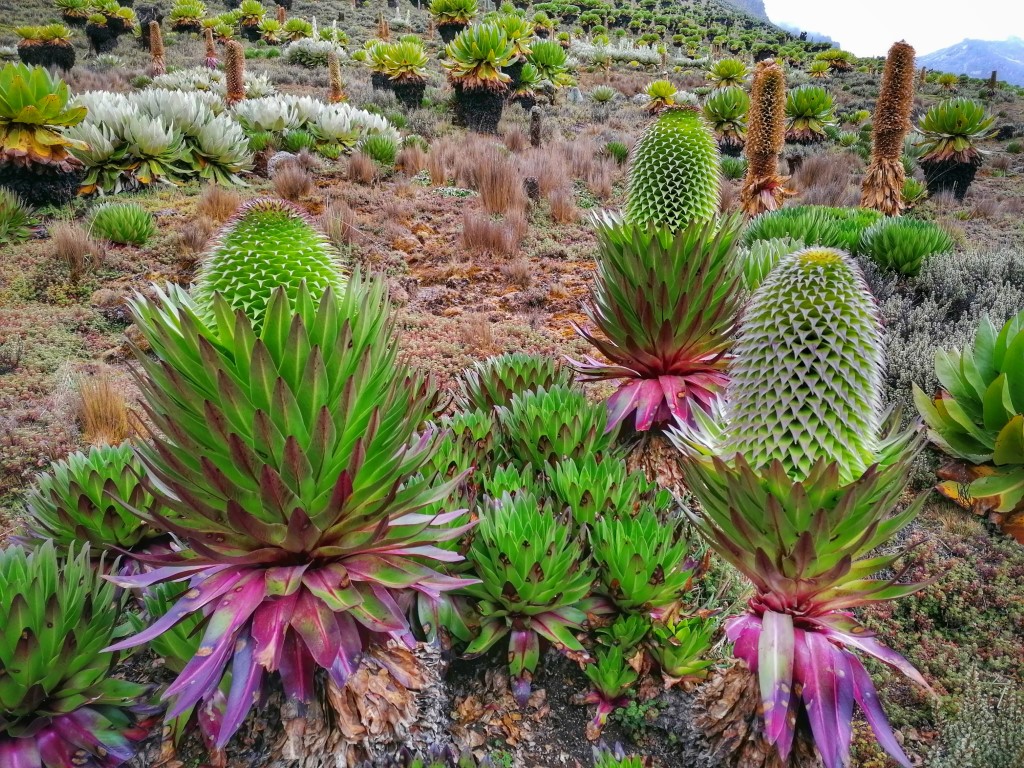
Mount Kenya Vegetation Zones
Mount Kenya Vegetation Zones: A Trekker’s Guide to the Changing Landscapes
Mount Kenya is a trekking paradise, offering climbers a stunning transition through diverse vegetation zones. From dense rainforests to alpine deserts, the mountain showcases nature’s beauty at its finest. Understanding these zones is essential for trekkers, as each one presents unique challenges and breathtaking scenery. Whether you’re hiking Mount Kenya for the first time or planning a new route, Ahambi Tours is here to guide you through this incredible journey.
The Five Vegetation Zones of Mount Kenya
As you ascend Mount Kenya, the landscape changes dramatically. Here are the five key vegetation zones and what you can expect in each:
Montane Forest Zone (1,800m – 2,500m)
The journey begins in the lush montane forest, a rich ecosystem teeming with wildlife. This dense rainforest receives high rainfall, creating an evergreen canopy of trees. Expect to see elephants, colobus monkeys, and various bird species as you trek through this vibrant zone. The forest provides a cool, humid climate, making it a refreshing start to your climb.
Key Features:
- Thick rainforest with giant trees
- Home to elephants, buffalo, and monkeys
- High humidity and frequent mist
- Popular on the Naro Moru, Sirimon and Chogoria routes
Bamboo Zone (2,500m – 3,200m)
As you gain altitude, the towering trees give way to a dense bamboo forest. This zone is peaceful yet challenging, as the narrow bamboo stalks limit visibility and create a maze-like effect. You may spot bushbucks, and duikers, though they are elusive.
Key Features:
- Dense bamboo thickets
- Limited visibility and slippery paths
- Found on the Sirimon and Naro Moru routes
Heather and Moorland Zone (3,200m – 4,000m)
Beyond the bamboo, the landscape opens into the heather and moorland zone. Here, the temperature drops, and the terrain becomes rocky with scattered shrubs and flowers. This zone is famous for its giant heather, lobelias, and groundsel plants, creating a magical, otherworldly feel.
Key Features:
- Rolling hills and open moorland
- Unique plants like giant groundsel and lobelia
- Cooler temperatures and occasional strong winds
- Most scenic on the Chogoria and Sirimon routes
Afro-Alpine Zone (4,000m – 4,600m)
Trekking further up, you enter the Afro-alpine zone, a high-altitude desert with rocky outcrops, sparse vegetation, and extreme temperature fluctuations. The ground is often covered with frost in the morning and dry by midday.
Key Features:
- Harsh, dry climate with rocky terrain
- Unique plants adapted to cold conditions
- Home to the giant groundsel and tussock grasses
- Common on all Mount Kenya trekking routes
Nival Zone (Above 4,600m)
The final stretch to the summit leads into the nival zone, characterized by bare rocks, glaciers, and permanent ice fields. Vegetation is almost nonexistent, with only lichen and moss surviving the harsh conditions. The air is thin, and temperatures drop significantly, making this the most challenging part of the trek.
Key Features:
- Icy terrain with glaciers
- Extremely cold temperatures
- No vegetation, only rock and ice
- Leads to Point Lenana, Batian, and Nelion peaks
Best Routes for Experiencing Mount Kenya’s Vegetation Zones
Mount Kenya offers several trekking routes, each showcasing different aspects of these vegetation zones:
- Sirimon Route – Gradual ascent through montane forest, bamboo, moorland, and Afro-alpine zones.
- Chogoria Route – The most scenic, featuring waterfalls, lush moorland, and stunning alpine views.
- Naro Moru Route – Fastest but steepest, with a dramatic transition through all zones.
Best Time to Trek Mount Kenya for Vegetation Views
The best time to experience Mount Kenya’s vegetation zones is during the dry seasons:
- January – March: Clear skies, moderate temperatures, and excellent visibility.
- June – October: Dry conditions, best for photographers and nature lovers.
During the rainy seasons (April-May and November-December) trails can be muddy and challenging.
Importance of Vegetation Zones for Trekking Success
Understanding the vegetation zones helps trekkers prepare for altitude changes, oxygen levels, and weather conditions. The shift from humid forests to rocky terrain also affects gear selection and hydration needs.
Book Your Mount Kenya Trek with Ahambi Tours
Ready to experience the stunning vegetation zones of Mount Kenya? Ahambi Tours offers expert-guided treks on the best routes, ensuring a safe and unforgettable adventure.
To book your Mount Kenya trek:
Visit: ahambitours.co.ke Email: info@ahambitours.co.ke WhatsApp: +254 725 727167
Explore Mount Kenya like never before with Ahambi Tours!
